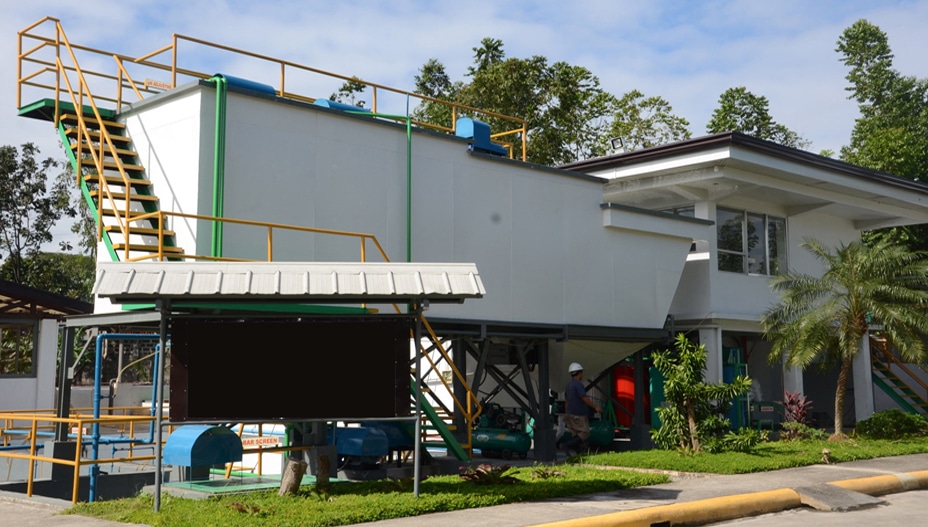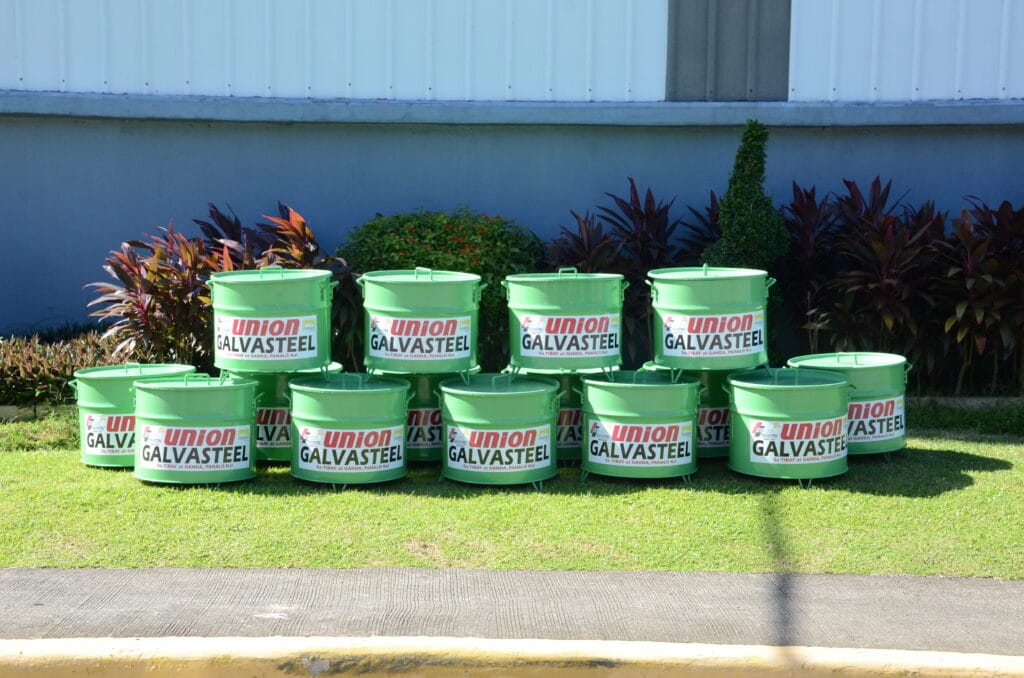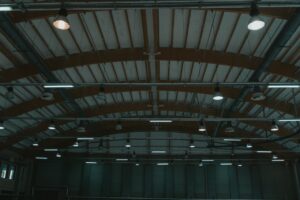
Construction is one of the most resource-intensive industries. In 2015, it accounted for roughly 75% of the US’ total electricity consumption. It is also responsible for approximately 55% of the country’s off-road fuel use. About a third of the EU’s water expenditure goes to building erection and utilization.
The development sector naturally generates a huge amount of waste. Its non-hazardous refuse include metal, wood, concrete, plastic, and glass. Asbestos, lead, solvents, products with polychlorinated biphenyls, and electronics are just some of its dangerous debris.
Poor construction garbage management reduces existing landfills. The Asian Development Bank said in 2017 that the Philippines yields 35,000 tons of municipal solid rubbish every day. But as of 2020, the country only has 108 sanitary dumps. This figure is a mere 10% of the 1,700 junkyards needed to adequately dispose its trash.
The lack of proper waste jettisoning facilities can drive people to either discard their refuse on vacant lots and bodies of water, or resort to incineration. But these practices result in land, water, and air pollution. Debris can sometimes release toxic chemicals into the soil and water. Burning garbage emits harmful smoke.
Contamination subsequently leads to public health problems. Garbage decomposing in open dumps attract flies, which are vectors of diseases such as cholera and E. coli. Lead, a common earth toxin, is linked to development disorders in children. Polluted water triggers diarrhea and dysentery. The inhalation of fumes from searing trash causes asthma, heart attack, and emphysema.
It is still possible for assembly firms to reverse these negative outcomes of poor waste management. Below are some ways the said establishments can do so:
Minimizing Building Waste through Recycled Steel
The Philippines’ erection trade should adopt the Western Australian Local Government Association’s (WALGA) proactive approach in dealing with rubbish. In its Construction Waste Management Plan Guidelines, the WALGA urged developers to shift their focus from waste management to waste avoidance. “[Instead] of managing the waste once it has been generated, look at ways to avoid the generation of that waste in the first place,” the organization advised.
Roofing manufacturers in the nation can follow this recommendation by adopting reprocessed steel. Steel is 100% reusable―it can be repurposed from one item to another without losing its strength. In fact, salvaged metal makes up roughly 45% of global steel output.
The steel recovery process involves several steps. Scrappers first collect discarded metal from various sources like residences, train stations, shipyards, and farms. They then extract ferrous metals from waste streams using a magnet. The sorted metals are subsequently shredded into smaller sheets and melted into a large furnace.
Once melted, the metals are purified to guarantee that these do not contain impurities. The thawed metals are cooled and shaped into bars afterwards. These metal bars are finally delivered to factories to be used as raw material for new items such as cans, roofing, railings, and pipes.
Employing recycled steel brings the following benefits:
Reduced Landfill Trash
Utilizing reprocessed steel greatly lowers the amount of garbage sent to dumps. Governments will no longer have to look for more areas to convert into junkyards to accommodate growing amounts of litter. Animal habitats, human settlements, and water bodies are therefore safeguarded against the negative environmental and health effects of exposure to rubbish.
Conserved Resources
Reusing steel lessens the need to mine virgin ores. A ton of repurposed steel is equivalent to 2,500 pounds of iron ore, 1,400 pounds of coal, and 120 pounds of limestone. In addition, salvaging metals uses 40% less water than forming mint ones. A community’s natural resources are thus maintained for future generations.
Mining-Related Issues Are Prevented
Limited mining activity due to a slashed demand for unadulterated ores averts catastrophes like landslides and mine spills. Lives and livelihoods remain intact, boosting a society’s productivity.
Increased Energy Efficiency
Drawing on recycled steel is an effective way for roofing manufacturers to help husband power. Compared to pure ores, the energy efficiency rates of recovered aluminum, copper, and steel is higher by 92%, 90%, and 56%, respectively. The US Environmental Protection Agency claimed that the energy saved from reprocessing one aluminum beverage can keep a 60-watt lightbulb running for at least four hours.
Stronger Economies
The National Institutes of Health stated that recycling 10,000 tons of refuse brings about 36 jobs. In sharp contrast, disposing the same amount of debris through incineration and landfill dumping creates only 1 job and 6 jobs, respectively. More new occupations mean additional opportunities for individuals and families to achieve economic and social advancement.
Creating a Site Waste Management Plan
No matter how zealous a roofer may be when it comes to repurposing, roofing projects will inevitably generate waste. Making a Site Waste Management Plan (SWMP) helps minimize building garbage. An SWMP identifies both the types of rubbish expected to be produced in an awning venture, and the projected amount of each of these litter. The manner in which these dregs will be chucked is also specified.
Such a detailed strategy results in the gains below:
Higher Operational Efficiency
Because they prepared their scrap handling scheme beforehand, roofers already know how to get rid of junk once they start working. They will not waste time figuring out what to do with the dross they formed in the middle of the job. Consequently, they focus exclusively on the activity and accomplish it within schedule.
More Savings
An SWMP enables roofers to spot wasteful practices in a task and replace these with more sustainable operations. Will the venture yield tremendous quantities of plastic refuse? Materials can be bought in bulk instead of purchasing items that are individually wrapped in plastic―the former is more economical since it uses less wrapping and has lower packaging costs. Though large substance acquisitions, contractors get to save money and a have a cleaner worksite.
Solid Industry Reputation
An SWMP sends clients the message that a roofing enterprise is responsible and committed to taking care of the environment. Needless to say, that company will earn more contracts and may even be selected for sustainability accreditations and awards. It will eventually expand and stand out from its competitors.
Proper Construction Waste Management Benefits Everyone
Everybody has a stake in a more sustainable Philippines. Homeowners are able to live in pristine locations. Contractors enjoy greater business continuity due to abundant resources. People are healthy and productive because they are not exposed to befouling.
A good roofing manufacturer makes the country more tenable through the appropriate control of building junk. This reduces the demand for virgin ores, maintains natural assets, and forestalls potentially dangerous extractive ventures. It also reuses steel waste rather than throwing it away, addressing pollution and unemployment. When these dilemmas are resolved, a more progressive state ensues.
Waste Management of UGC Calamba Plant

As a manufacturer of roofing and other construction materials, UGC has a Waste Management for Recyclables, Hazardous wastes and Residual waste (office waste etc.) Both Hazardous and Residual waste are being hauled, disposed and treated by our DENR-accredited treaters. Hazardous wastes are quarterly scheduled, and Residual wastes are weekly scheduled. Similarly, the Recyclables are being hauled weekly (and as needed) to specific service providers. All the generated waste of UGC Calamba are being monitored and reported in our DENR Self-Monitoring Quarterly Reports. Union Galvasteel Corporation provides roofing materials, systems, and accessories that are made of 100% recycled metal. For more information about our products, call our Calamba office at tel. nos. (02) 8520-8823; 8520-8831 Trunk line or (049) 545-0084 to 86 Trunk line or click here.



